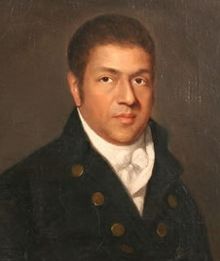Paul Cuffe (1759-1817)
- In 1815 Cuffe sailed for the West coast of Africa with 38 Black emigrants to begin a new life in Sierra Leone.
- Only 8 out of 38 emigrants could pay their way on their voyage back to Africa. Cuffe paid the way for the remaining 30 emigrants.
- He hoped to create trade between Africa and the U.S. that didn’t involve human trafficking of Africans.
- He was the first Black man to initiate the “Back to Africa” venture in the U.S. He planned on sending free African-Americans back to the homeland of Africa.
- 1780 Paul Cuffe and his brother along with five other free Blacks petitioned the Massachusetts legislature for “relief from taxation” and argued that they were not freemen of the State. They were thrown in a Taunton jail for civil disobedience.
- Cuffe’s was born Slocum the name of his father’s former slave owner, so he dropped it and changed it to his father’s African name “Kofi”, but spelled it Cuffe (or Cuffee) instead.
- The historian sailed under Black captains with Black crews, his ships could be found as far away in the waters of Scandinavia. On his fourth voyage, he was captured by the British and held in prison for 3 months.
- By age 50 Cuffe owned a ship, two brigs, and several smaller vessels, as well as houses and land. He was considered one the most respected Black man during his time.
- He not only promoted emigration of Black Americans to Africa but wanted to encourage manumission in his homeland. He believed that the inhabitants of Africa could be “an enlightened people.
- Cuffe is considered one of the most successful Black entrepreneurs of his generation.
Paul Cuffe is part of our Black success series for Black History Month.



